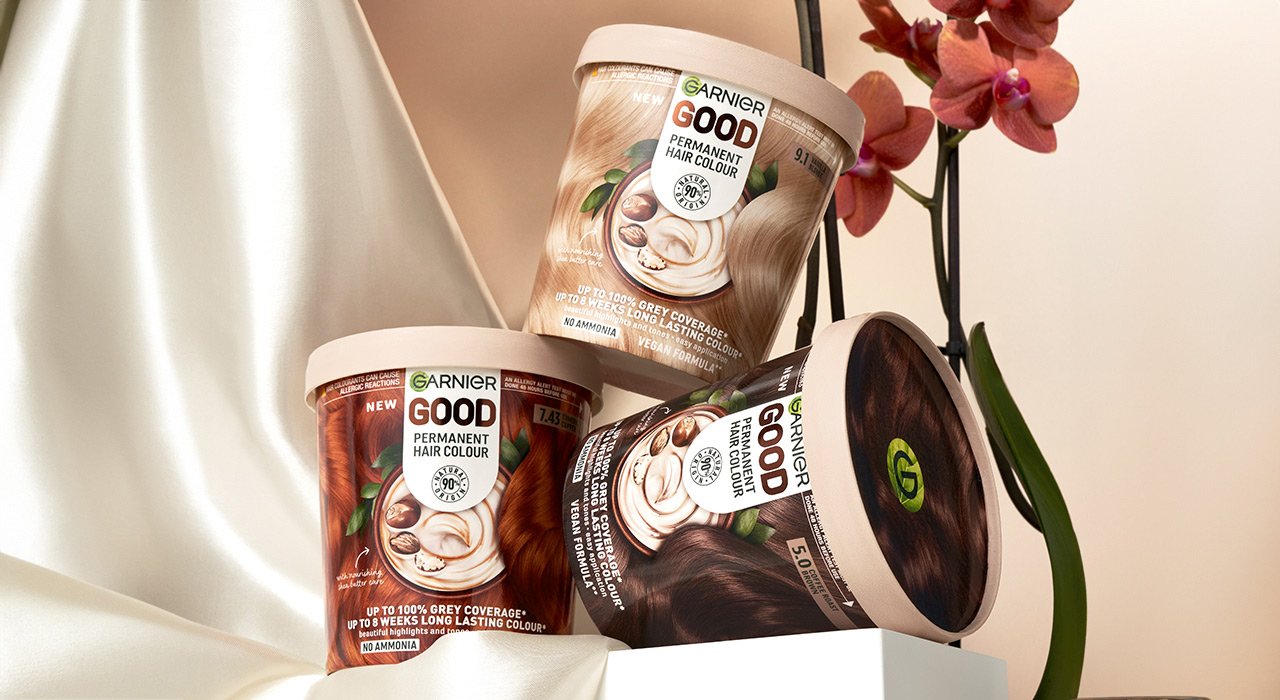Discover The Best At Home Hair Colour With Garnier
What does ammonia do in hair dye and is it bad for hair? Let Garnier explain what ammonia does and why their ammonia-free hair colour is a good option.
Do you want to try on your favourite shade before you buy? Before buying that box of at home hair dye, use our Virtual Try-On service to see how your chosen shade looks on you. All products with the Try It On icon are available for you to try on our website. Click on a shade and discover your new favourite hair colour. Find out more.
Make sure the colour you try on works on your hair. Take our 1-minute hair colour quiz to be certain.
Say ‘No’ To Ammonia
It’s not difficult to say ‘no’ to something that is not particularly pleasant; it’s not like we’re saying no to chocolate or soap operas - we’re simply encouraging you to make a choice. Colour your hair with ammonia-free products, or don’t; the choice is yours. But, let’s give you the low-down on ammonia (so you can make an informed decision).
What is ammonia?
Good question; it’s a powerful chemical. For many, many years ammonia has been included, as a matter of course, in hair dyes.
Why is that?
Because ammonia changes your hair’s Ph levels (it’s levels of acidity). You remember those litmus tests you used to do at school in the chemistry lab? The ones where you would dip a piece of litmus paper in a liquid and see whether it goes red or pink? Well, that was all about establishing whether a substance was acidic or alkaline. Human hair is naturally acidic and scientists working in the beauty industry long ago discovered that an alkaline chemical would open up the hair cuticle to allow dye to be absorbed, causing the colour of hair to change. Ammonia is a well-known and commonly available alkaline solution.
But with ammonia-free hair colour, how is colour absorbed?
Good question; it’s true that getting a dye to take to your hair can be difficult without an alkaline ‘agent’ to help. But not if you know how. Garnier’s chemists have spent years in the lab perfecting ammonia-free hair colour, such as the Garnier Olia best at home permanent hair dye range, which use natural oils to secrete colour deep into the shaft of the hair. It’s clever stuff because those natural oils are far more hair-friendly (and everyone knows that happier hair looks and feels a lot smoother and silkier than ammonia-damaged hair).
So why chose Ammonia Free?
Ammonia can be irritating. Have you ever coloured your hair and found you can’t stop scratching your scalp afterwards? That’s probably because you’ve used a dye with ammonia, which is irritating your skin. It’s quite common to have a mild reaction. Olia gives you optimal scalp comfort. No ammonia also means no harsh smells and has a pleasant scent.
Don’t hair salons use ammonia-based dyes?
It’s true that salons have used ammonia for years, but many professional colourists now appreciate the benefits of ammonia-free products – for themselves and their clients – so always ask first.
Should I avoid ammonia?
Let’s be clear. All hair dye, to some extent, can weaken your hair. The more you use hair dye, the more you risk changing the way it looks, feels and behaves. Choosing the best ‘at home’ hair colour comes down to how concerned you are about the effects of ammonia on hair or how strong the colour is. What we can promise you is that the Garnier Olia range is completely ammonia-free and is designed with nourishing oils that create a glossy, long-lasting colour, even over greys. Garnier Olia has a broad colour range, whether you want to go a stunning brown hair colour like our deep brown hair dye, a more bright and bold red shade like our intense red or even a light blonde hair colour. Plus, for those wanting to go extra light blonde we have a maximum bleach shade with no ammonia that is 60% oil powered. After all, it’s your hair and your choice.





